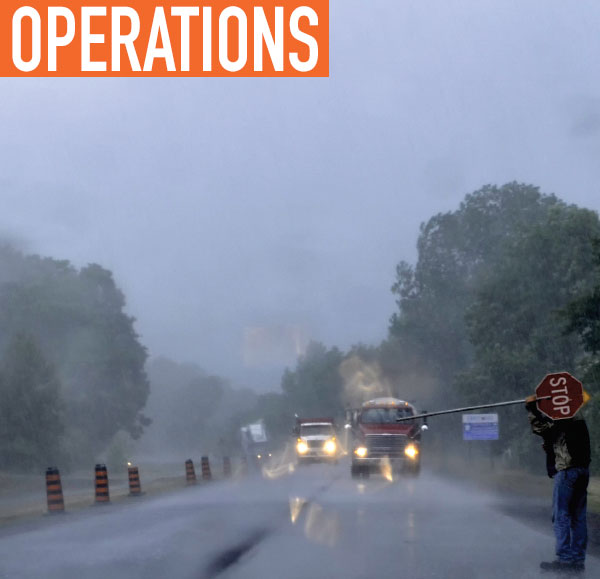High procurement and operating costs mean fleets are always on the lookout for savings and profit opportunities. We often think of achieving these by increasing productivity, reducing expenses, and mitigating vehicle downtime. However, one of the most overlooked costs of operating a fleet, regardless of industry or size, is driver safety.
This article series looks at the costs associated to fleet safety, the impact of driver behavior, and how driver scorecards can help fleets gain control over their safety programs.
WHY SAFETY?
A company’s greatest asset is its employees. Corporate culture, innovation, competitive advantage—they all begin and end with human capital. Tragically, motor vehicle crashes are the leading cause of death and injury for all ages, according to the US Department of Labor, and this is a major concern for fleets.
Accidents that happen on and off the job “have far-reaching financial and psychological effects on employees, their co-workers, family, and employers,” according to the US Occupational Safety and Health Administration (OSHA). Therefore, investing in your employees’ safety and well-being is essential.
Numerous respected agencies and organizations, such as the National Highway Traffic Safety Association (NHTSA), Network of Employers for Traffic Safety (NETS), and the OSHA, strongly believe all fleets should have a safety program for employees.
The purpose of a driver safety program is to:
- Save lives and reduce the risk of life-altering injuries
- Protect your organization’s human and financial resources
- Guard against potential company and personal liabilities
DIRECT COSTS
The cost of ignoring safety can be steep—including expensive medical fees, court litigation and, in some cases, business shutdown. Each year, employers collectively pay $60 billion for motor vehicle crashes involving their employees. OSHA reports that each fatal car crash averages a payout of $500,000. This expense can go even higher than $1 million, depending on the severity and legal outcome.
Accidents can also increase employee benefits costs such as workers’ compensation, social security, and health and disability insurance.
INDIRECT COSTS
Over and above direct costs, indirect costs can take a toll on operations and may not be easy to account for. A fleet’s productivity is significantly impacted when vehicles are taken out of use for replacement or maintenance repairs. Beyond the impact to assets, administrative costs can quickly add up when the employee is unable to work. The company’s brand equity can also take a hit if customer service is affected, there is loss of business, or bad publicity.
More examples of indirect costs facing supervisors and fleet managers:
- Rescheduling or making special arrangements
- Fleet manager’s time to coordinate vehicle repair/replacement
- Reassignment of personnel to cover for missing employee(s)
- Overtime pay to cover work of missing employee(s)
- Re-entry and retraining of injured employee(s)
- Administrative costs (documentation of injuries, treatment, absences)
- Accident investigation costs
DRIVER SAFETY
The United States Department of Labor reports that “every 12 minutes someone dies in a motor vehicle crash, every 10 seconds an injury occurs, and every 5 seconds a crash occurs.” The fact that many of these incidents occur on the job or during the daily commutes is just as alarming.
Whether you employ a fleet of professional drivers, a mobile sales team, or have employees who commute to work, employers often bear the cost of work-related motor vehicle accidents. Speeding, for example, has been a factor in more than 30 percent of US crash deaths since 2005.
NHTSA estimates the annual economic costs of speeding-related crashes to be $40.8 billion, with employers picking up an $8.4 billion chunk of this total.
The driver’s actions leading up to an accident has the greatest impact on outcome and severity. Sometimes drivers have little control over the circumstances, but NHTSA has found that 94 percent of car accidents are a result of what the driver did or did not do.
What we can learn from these statistics is that with proper coaching and safety measures in place, many accidents are avoidable. By developing safe driving policies, employers reduce the risk to their employees, and to their bottom line. According to NETS, investing in road safety can reduce a fleet’s crash rate by 50 percent, which in turn, protects the lives of employees as well as those of other drivers on the road.
HARD LINE ON SAFETY
There’s no denying that employers and fleet managers have an important role—and responsibility—to help reduce the number of deaths and injuries related to vehicle collisions.
Year after year, safety appears on the top of the list when it comes to fleet challenges. How can fleet managers tackle this issue and improve driver safety while also improving productivity? Driver scorecards are one solution.
Scorecards are designed to maximize driver safety and identify a fleet’s riskiest drivers. It can complement any fleet’s safety measures, and acts as a powerful tool for gauging their drivers’ safety risk. A driver scorecard also allows fleets to gamify their safety program as an incentive to stay safe.
In the next article of this series, we’ll look at how driver scorecards using telematics data can help improve fleet safety.
FOR MORE INFORMATION
This article has been adapted from Geotab’s driver scorecard white paper by Ben Schwartz into three articles for Modern WorkTruck Solutions. Find out more about Geotab, visit www.geotab.com.
MODERN WORKTRUCK SOLUTIONS: APRIL 2018 ISSUE
Did you enjoy this article?
Subscribe to the FREE Digital Edition of Modern WorkTruck Solutions magazine.
![]()




